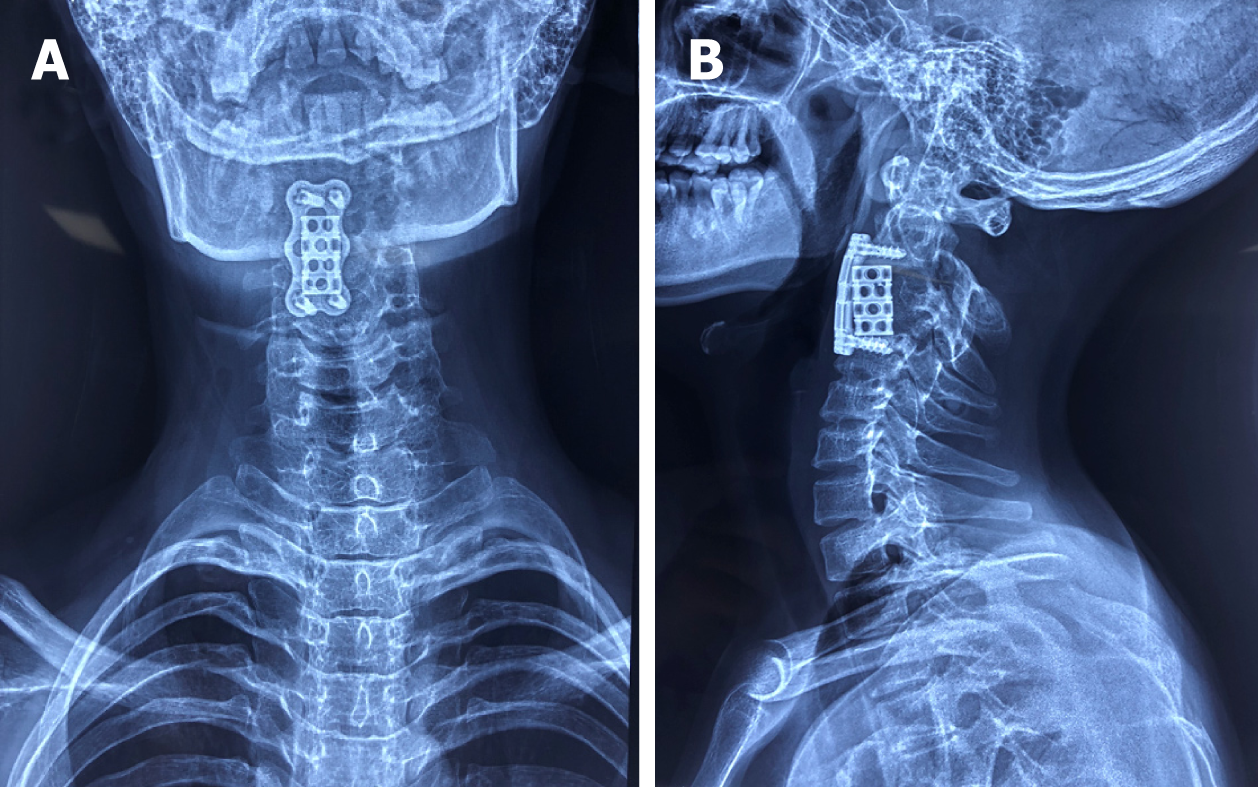Anterior Cervical Corpectomy and Fusion (ACCF)
OVERVIEW– Anterior cervical discectomy and fusion (ACCF) is a surgery to remove a vertebral body in the neck. An incision is made in the throat area to reach and remove the compressing body. A graft is inserted to fuse together the bones above and below the disc.
This surgery is very similar in its approach and technique as the ACDF surgery, expect that instead of disc the whole vertebral body (corpus) is removed. This is because the pathology causing nerve compression/ instability/ deformity is located behind the vertebral body.
Surgery is usually suggested as the last resort. In very few cases causing weakness of arms/legs is an emergency procedure recommended. After a thorough discussion (understanding risks and benefits) with the surgeon, the decision for surgery is taken.

The procedure is done under general anaesthesia. A tube is inserted in the throat to help breathing during anaesthesia. The surgery is performed through a 1.5-2 inch incision taken in the front of the neck. Through the inter muscular planes, trachea (wind pipe), oesophagus (food pipe), important neuro vascular structures are retracted to access to the spine. After confirmation of level to be operated with C-arm (Intra operative X-ray), disc space is exposed. Adequate magnification is achieved with microscope/ surgical loupes. Disc annulus is cut and disc is removed with grasping tools. The disc above and the vertebral body is removed with surgical instruments. The spinal canal is exposed and any material causing compression of spinal cord/ nerves is removed. The vacant space is filled with bone graft (autograft/allograft) which is required for fusion (fusing two bones together). Most of the times bone from adjacent vertebrae is used as graft, however, if deficient, bone from hip region may be removed. This is filled in a spacer/ cage made of Titanium which is bio inert and compatible. This construct is Stabilized with plate and screws. Everything is confirmed under C-arm and wound is stitched up. Sometimes, drain may be kept for 1-2 days to prevent haematoma formation. Patient is made to walk on same day/ next day.
After the surgery, patient may be shifted to ICU for observation or to the room depending upon the medical condition. A hard/ soft cervical collar is placed for 3-6 weeks. This is to prevent accidental injury and to limit neck motion to aid in fusion.Hoarseness, sore throat, or difficulty swallowing may occur in some patients and should not be cause for alarm. These symptoms usually resolve in 1 to 4 weeks.
Normally, 3-5 days of hospital stay is required. Once medical condition is stabilized, patient has adequate pain relief, with normal swallowing and speaking, patient is discharged once mobilized.
Patient is asked to follow up for stich removal between 2-3 weeks from surgery. A waterproof dressing may be applied so that bath can be taken. Patient is required to follow up at 6 weeks, 3 months, 6 months, 1 years and then annually after surgery for examination. Based on serial x-rays and recovery – gradual increase in activities is advised.
After fusion you may notice some range of motion loss, but this varies according to neck mobility before surgery and the number of levels fused. Motion-preserving artificial disc replacements CDR have emerged as an alternative to fusion.
Disclaimer: The description of procedure is how usually a surgery is done. During the procedure, based on intra operative encounters which varies from patient to patient different steps may be performed.
